The New VW GTI Isn’t Really a Leap Forward
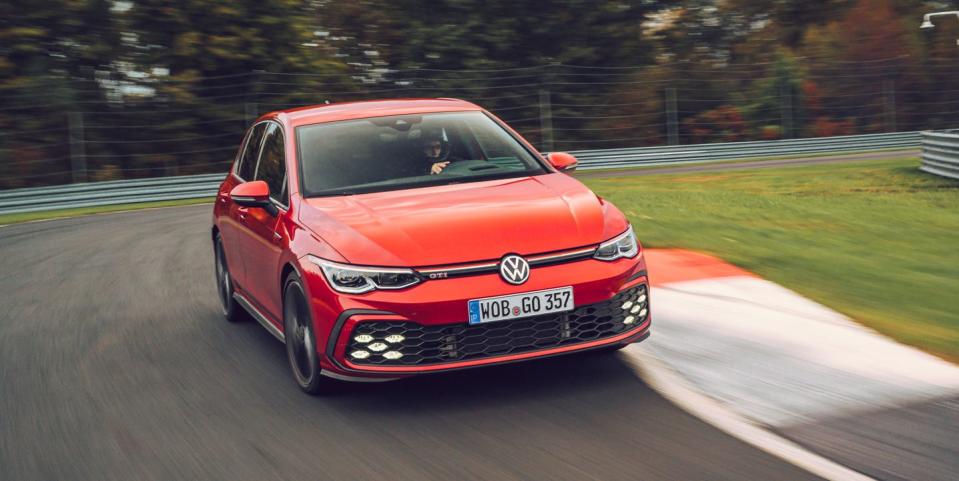
There are cars that will generate more column inches of ink than the new 2022 Volkswagen GTI this year. But every new GTI is an icon. VW has been building them since 1976. That makes this new model year the 47th. So each generation carries with it a thick, well-earned heritage of high performance and utter practicality. There are other cars like it, but nothing else is it.
The just-superseded Mk7 standard-bearer was not the most exciting hot hatch, but it wore the legacy well. It has been, by far, the nicest of the hotter hatchbacks to live with. It’s an overachiever, an Audi on a budget that’s loads of fun when you want it to be. A car we'll look back on fondly, a car we recommended to many, and one that has defined VW at its best. So, going in, expectations are high for the Mk8 GTI.
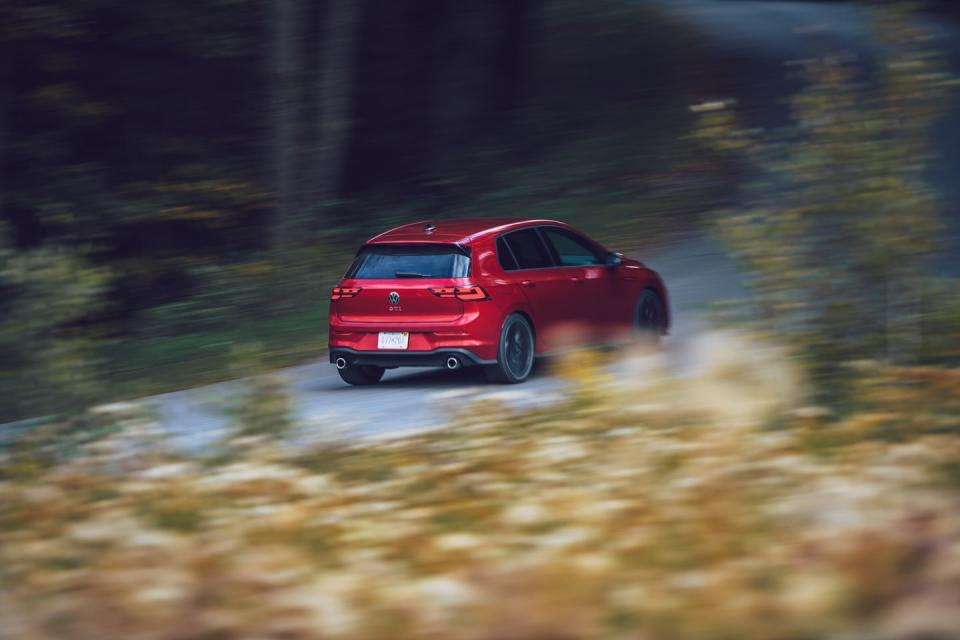
Much of the Mk7's fundamental essence carries over into the Mk8. This is an evolution of the MQB platform with some thoughtful detail changes. For instance, the front subframe is now an aluminum casting of stamped steel. Audi-branded MQB vehicles like the A3 have used these lighter yet more robust structures for years. And swapping the superior Audi part into VW MQBs has become a popular upgrade. But the basic suspension design and most of the floor and firewall parts are little changed.
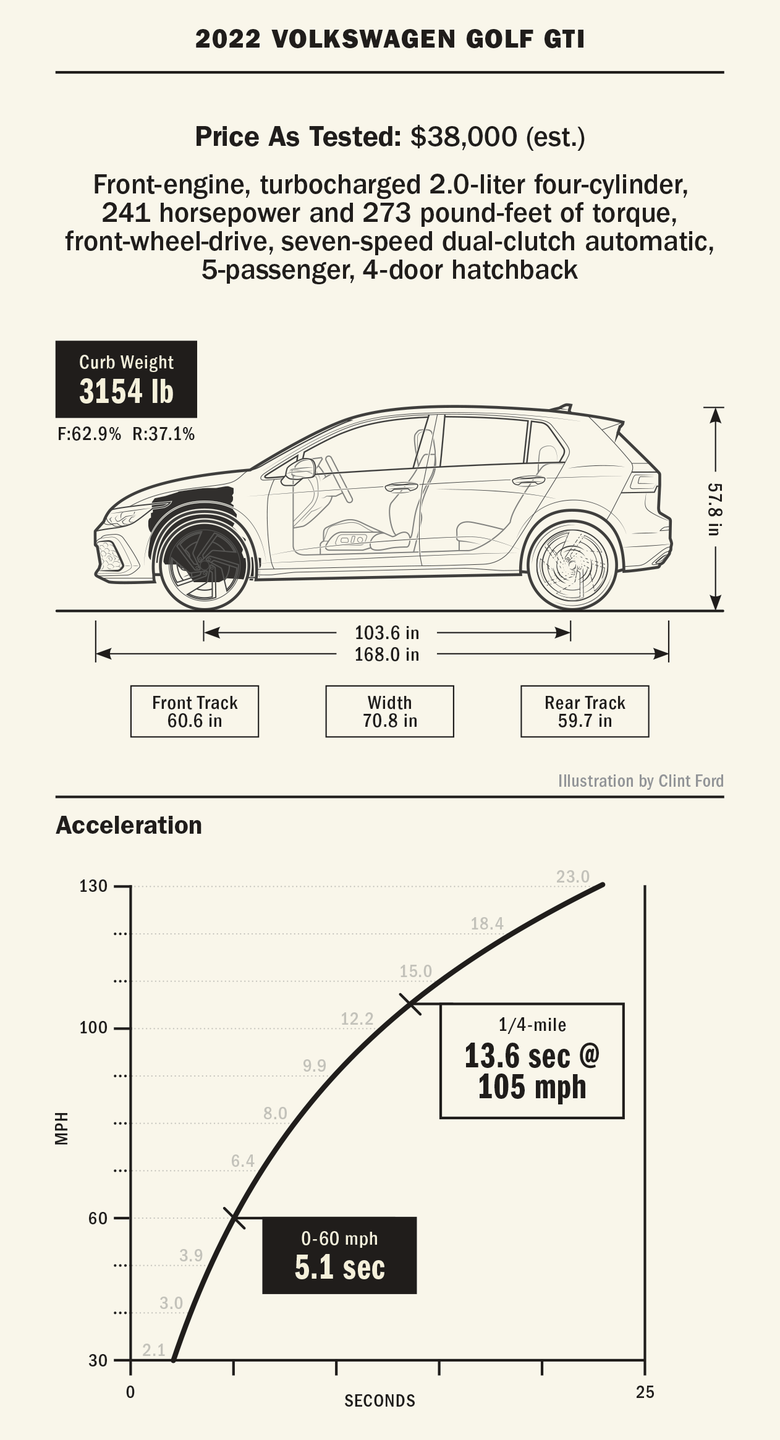
That in mind, tweaks include stiffer suspension bushings and new damper hydraulics. Out back, for example, the spring rates are up by 15 percent to compensate for the better-planted nose. The 2.0-liter turbo four-cylinder E888 engine, which debuted in the 2008 GTI, has progressed into Evo4 form. It’s rated at 241 hp and 273 lb-ft of torque thanks largely to extra boost, and that all goes to the front wheels via a six-speed manual or a seven-speed dual-clutch (DSG) transmission, just as before. VW's VAQ active limited-slip differential has also been made standard.
So, in that great German automaking tradition, the Mk8 GTI is not revolutionary. This possibly has as much to do with the fact that the Mk7 didn't need much improvement as it does the tens of billions of dollars the diesel-emissions scandal has cost VW. Plus, for VW, like many manufacturers, going all in on EVs is eating into R&D and other product-development budgets.
Our initial impressions of the new GTI—a German-spec preproduction car in loaded Autobahn trim with the DSG 'box and optional dynamic damper control (DCC)—came at Monticello Motor Club. Track testing isn't an irrelevant indulgence—GTIs and Golf Rs are common sights at the world's road courses—but a glimpse into the car’s broad range of talents. And it's not like the roads around New York's Catskills didn't offer some delectable opportunities.
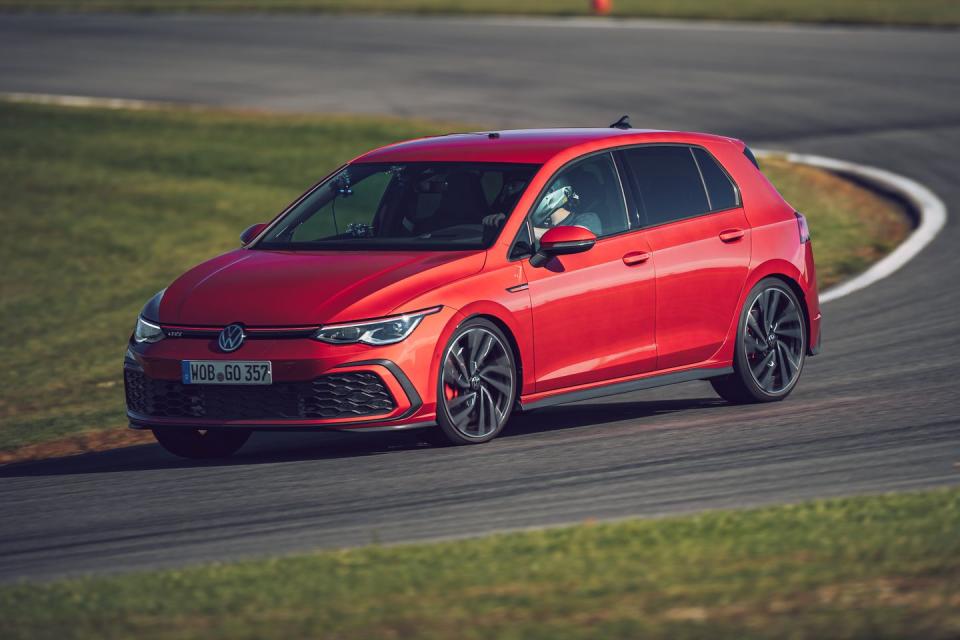
On Monticello's North circuit, the GTI came in for almost general acclaim from everyone who drove it. Though it took a while to get the car set up. One big step VW touts is a new electronic control system with all sorts of powertrain, steering, chassis, and stability-control settings. There are a blinding 15 DCC modes alone, so VW gave us recommended settings for fast laps: drive mode in Sport, DCC set to max, ESC off. Everything else is tunable down to personal preference. Hours and hours of obsessive-compulsive tinkering.
VW claims this GTI has eliminated understeer, and while that's far-fetched, the balance is wonderfully neutral. In the GTI, it's easy to get up to speed, put down respectable lap times, and feel like a driving superstar. At Monticello, the Road & Track stopwatch measured this car as seconds faster than the new Toyota GR86 and Subaru BRZ despite their similar like-size tires. The VW's shoes are Bridgestone's new Potenza Sport, while the Toyobarus ride on Michelin Pilot Sport 4s.
Serious road-course work with an Mk8 GTI brings with it the usual caveats of "upgrade brake fluid and pads." But straight out of the box, it's one of the best front-drive track cars on sale. The front diff is uncanny at putting power down and managing torque steer, and while the combo of a 2.0-liter turbo four and DSG is not the most exciting, it's ruthlessly efficient. It's easy to see why this basic engine design has been copied so relentlessly. And its best home is the GTI.
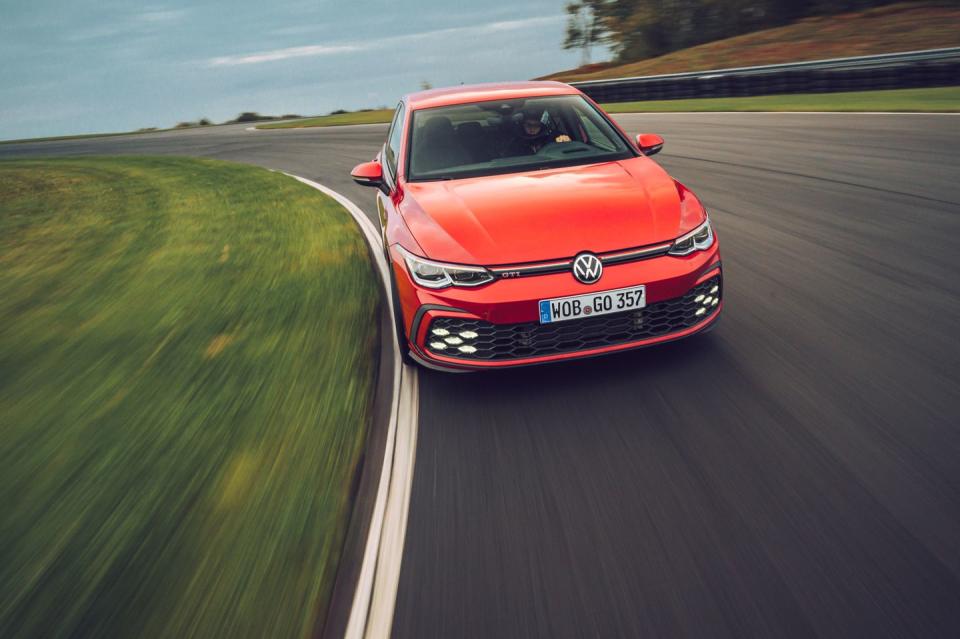
There are really no vices here. The new GTI is an excellent track car for novices or anyone who wants to have fun without working too hard at it. Once the drive modes are figured out, the GTI doesn't demand much of the driver; it just goes where you want. There are more fun ways to carve a line through a road course—the rear-drive Suboyota twins wag their tails more joyously—but the VW's safe, predictable, seamless handling is an achievement.
Track driving focuses the mind. If you're doing it right and the car is good, you're not thinking too much about the minutiae of the vehicle. Instead, you're focused on executing what it takes to run a good fast lap. On the road, the Mk8 shortcomings became ever apparent.
The Mk7 GTI is a roadgoing sweetheart, an expertly tuned compromise at a relatively working-class price point. The Mk8 introduces a lot of new tech to the GTI, and almost all of it is for the worse.
There are so many drive-mode combinations that figuring out the ideal setup for any particular road is unlikely. And tweaking on the go is made almost impossible by an infuriatingly underdeveloped, overcomplicated infotainment screen. There are preset Eco, Comfort, Sport modes. You'd think putting it in Sport would do the trick, but the dampers are overly stiff here—the car all of the sudden gets pogo-y. Comfort mode is far better, but to get a soft chassis-sporty powertrain setup, you've got to configure your Individual mode. And on and on and on.
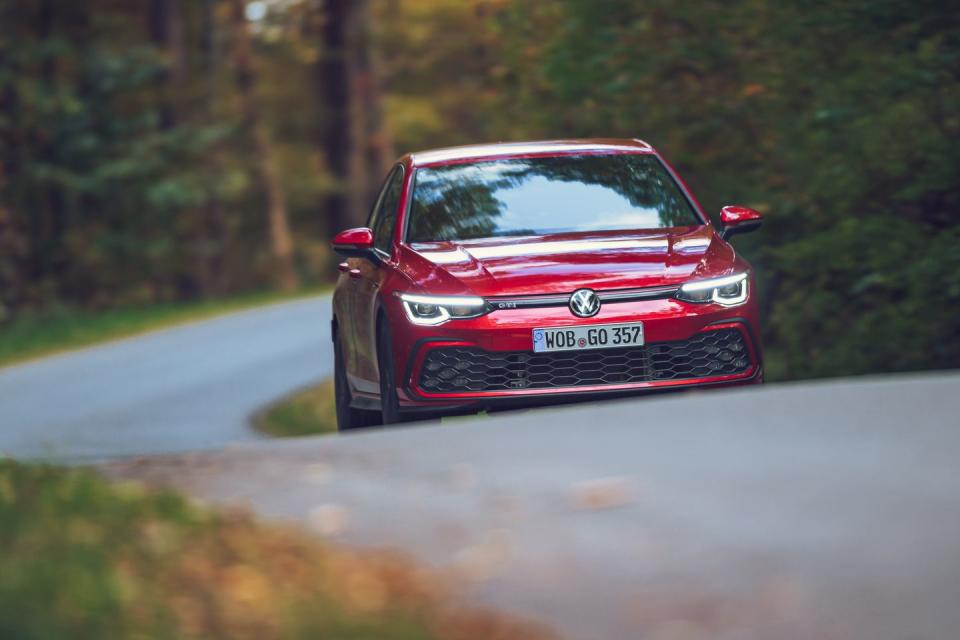
Too many of today's performance cars offer this overabundance of overwhelming choices, even R&T favorites like the Cadillac Blackwing twins and the Hyundai Veloster N. But the difference here is that the old GTI didn't have this level of complication and didn't need it. It was wonderful even left alone. Just give us one or two good modes, Volkswagen. Do the work for us.
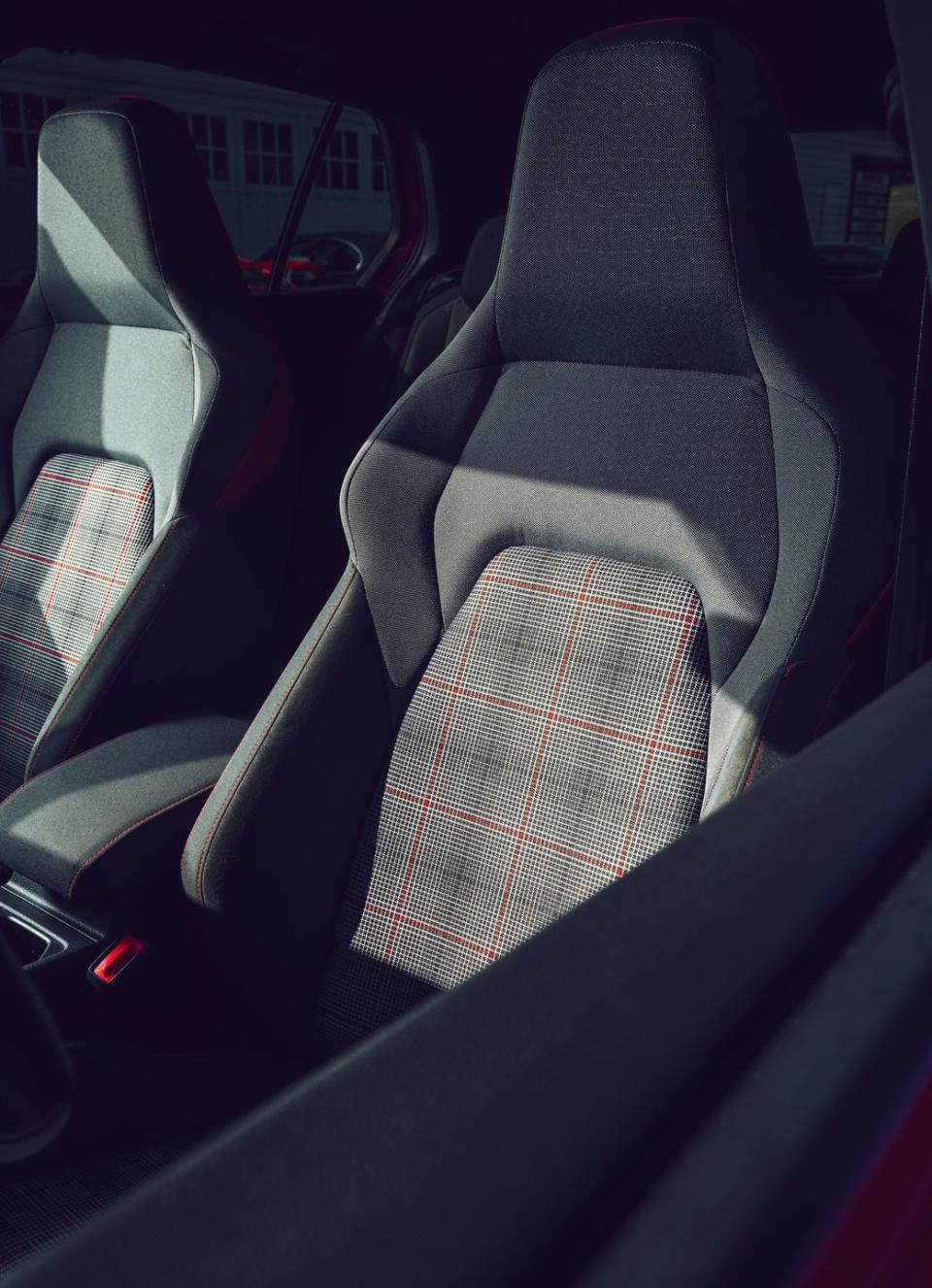
Once you get past that, the Mk8 GTI drives a lot like the Mk7, which is to say very well, though the steering on a Mk7 was a bit crisper. Some also felt the engine lost something in the transition from 7 to 8 despite the increases in power and torque.
Ultimately, the Mk8 is a curious thing. It's a better track car than the Mk7, but a more compromised road car. There's the horrifying infotainment system followed closely by the maddening capacitive touchpads on the steering wheel. Real buttons and switches that click when pressed are still the best solution. VW clearly did not see how well abandoning knobs and buttons went for Honda. Plus, there's a general sense of cheapness throughout the interior. As before, the most important bits, steering wheel and seats, are great, but everything else feels a grade lower. That's a problem when a big part of the Mk7's appeal was in its excellent refinement.
The frustration that comes with using the capacitive touch sensors to adjust the ventilation and air-conditioning systems is almost a deal breaker. They aren't a high-tech solution to a problem. Because switches and buttons . . . were never a problem.
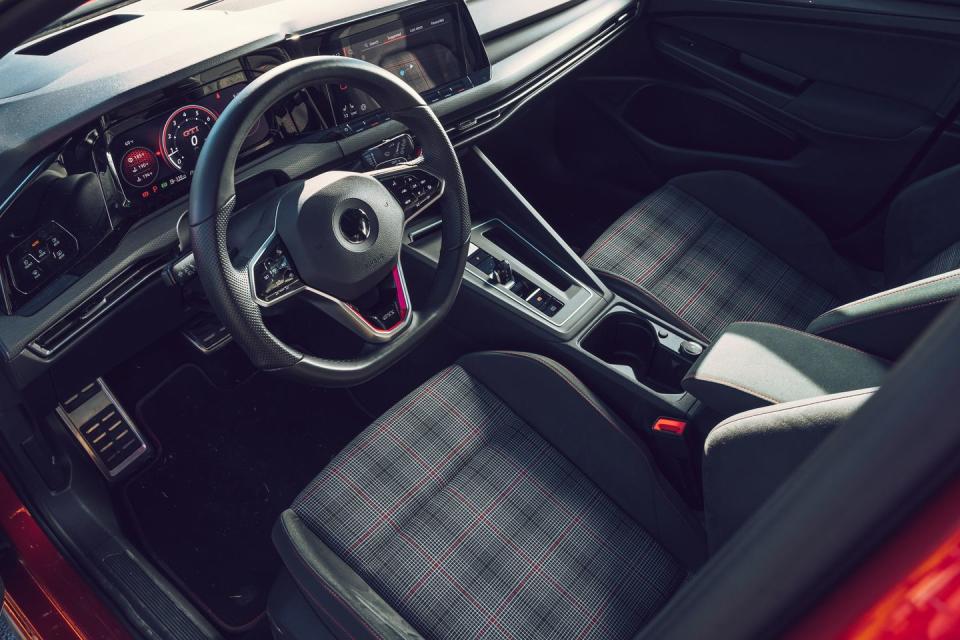
Despite the diminution of everyday operation, the Mk8 GTI is still a fine hot hatch. It blends easy performance and daily usability in much the same way that's made all recent iterations of the GTI so beloved. It's just that the old GTI offered those qualities with more polish and more positive driver feedback. We journalists recommended the Mk7 to lots of friends and family, even nonenthusiasts, because the car was such a well-rounded package. But there are too many niggling caveats with the Mk8. Especially when you can still buy an Mk7.
The Mk7 was an almost perfect daily driver, with refinement matching cars at a far higher price point. A stunning testament to the engineering might of the Volkswagen Group. Too much of that refinement has disappeared with the Mk8. It's no longer the default hatchback at this price point. The Hyundai Veloster N offers more fun, while the Mazda 3 Turbo does the luxury-on-a-budget thing.
What gives us at least some hope is that these aren't huge problems for Volkswagen to fix. The car's mechanical components are fundamentally sound—it's just the execution of the rest.
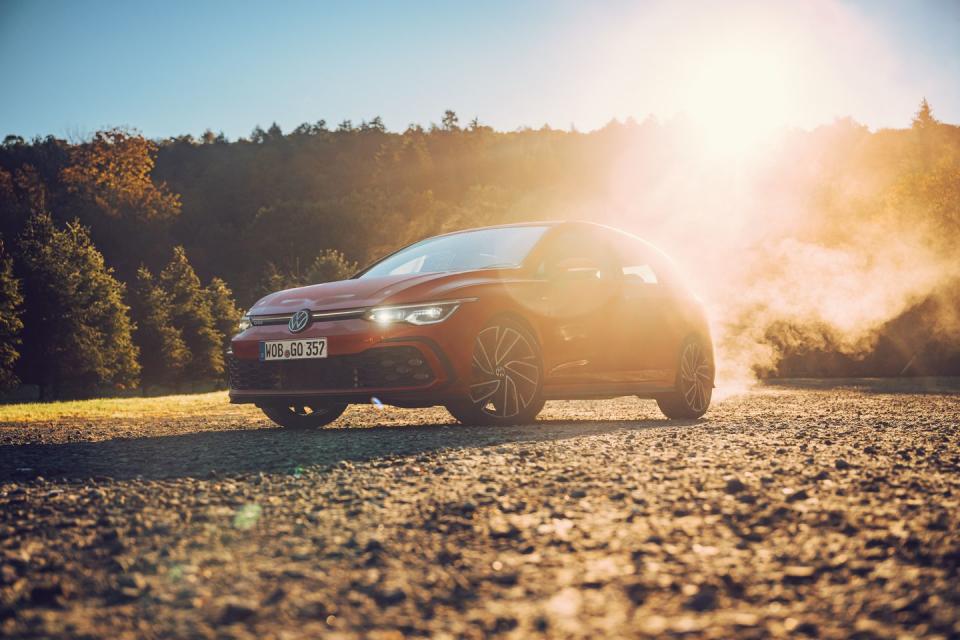
You Might Also Like

 Yahoo Autos
Yahoo Autos 